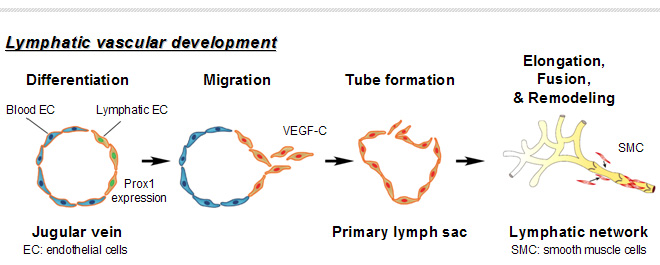|
HOME > Proposed research projects > 2012-2013: Proposed research projects 07
 2012-2013: Proposed research project 07Molecular mechanism underlying Aspp1 function in lymphatic vascular formation and maintenance
Purpose of the Research ProjectDuring an initial phase of lymphatic vascular development, endothelial cells in the jugular vein differentiate into lymphatic endothelial cells. These cells lose their polarity, start migrating dorsolaterally, and form a vascular structure of the primary lymph sacs from which lymphatic vessels develop further by vascular sprouting. It is hypothesized that cell-cell adhesion and motility should tightly be regulated during these processes. However, molecular mechanism underlying them remains unclear. In this project, we will clarify the molecular mechanism underlying Aspp1 function in lymphatic vascular formation and maintenance. Content of the Research ProjectWe previously identified Aspp1 as an endothelial-specific gene during mouse embryogenesis and showed that Aspp1 is involved in lymphatic vascular development. Based on in vivo findings, we will investigate how Aspp1 regulates lymphatic vascular tubulogenesis. Expected Research Achievements and Scientific SignificanceLymphatic vessels are closely related to blood vessels, but the cellular mechanisms of development appear different between these two vascular systems. Although Aspp1 is expressed in both endothelial cell types, Aspp1-deficient mice exhibit a developmental defect only in lymphatics. A family member protein Aspp2 is expressed in epithelial cells and plays a key role in establishing the epithelial cell polarity. Much attention has been given to the Aspp family proteins as tumor suppressors, but we found that Aspp1 may be a regulator for lymphatic vascular formation. This project will reveal a new molecular mechanism regulating lymphatic endothelial cell behavior during tube formation.
|








